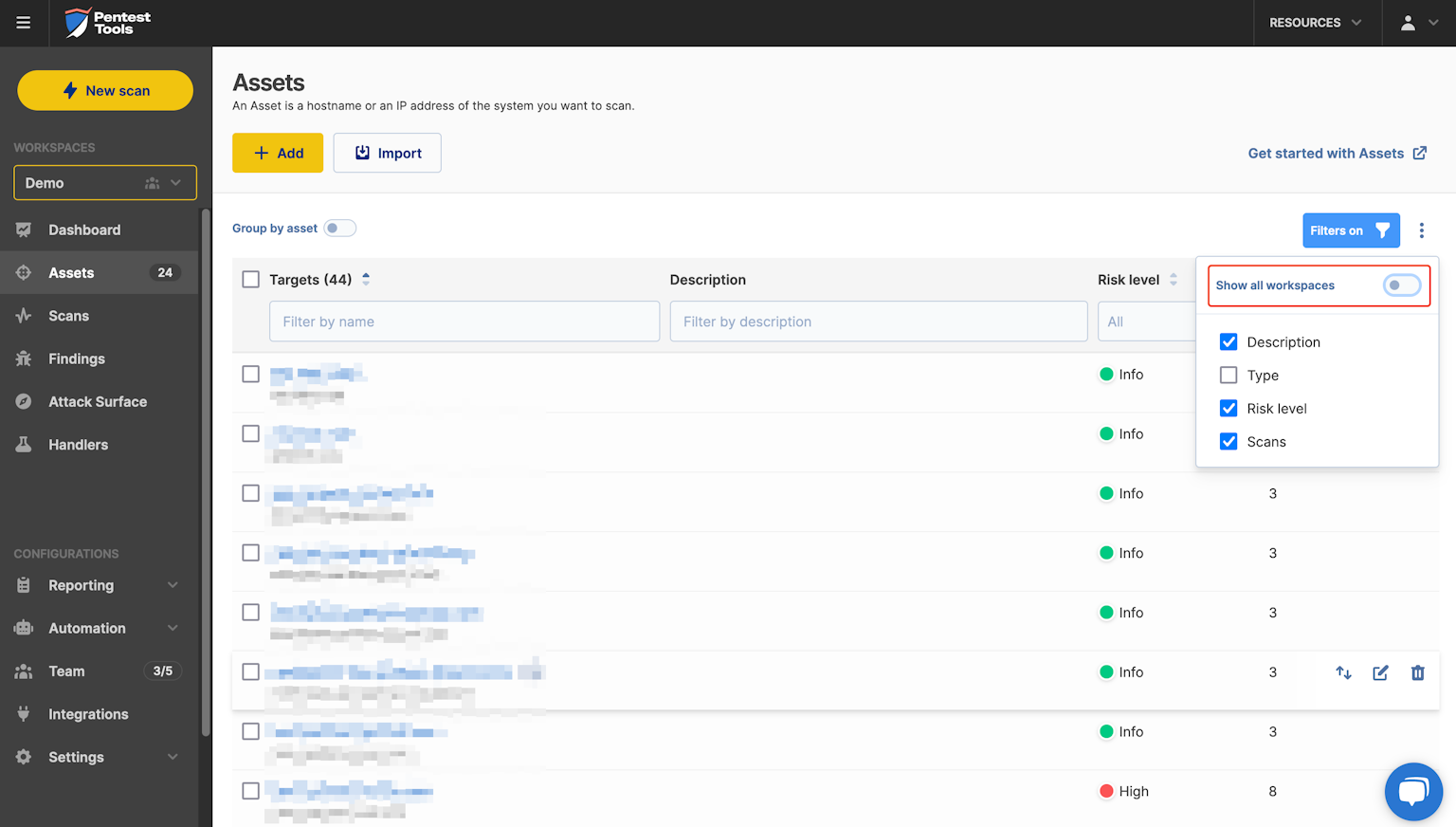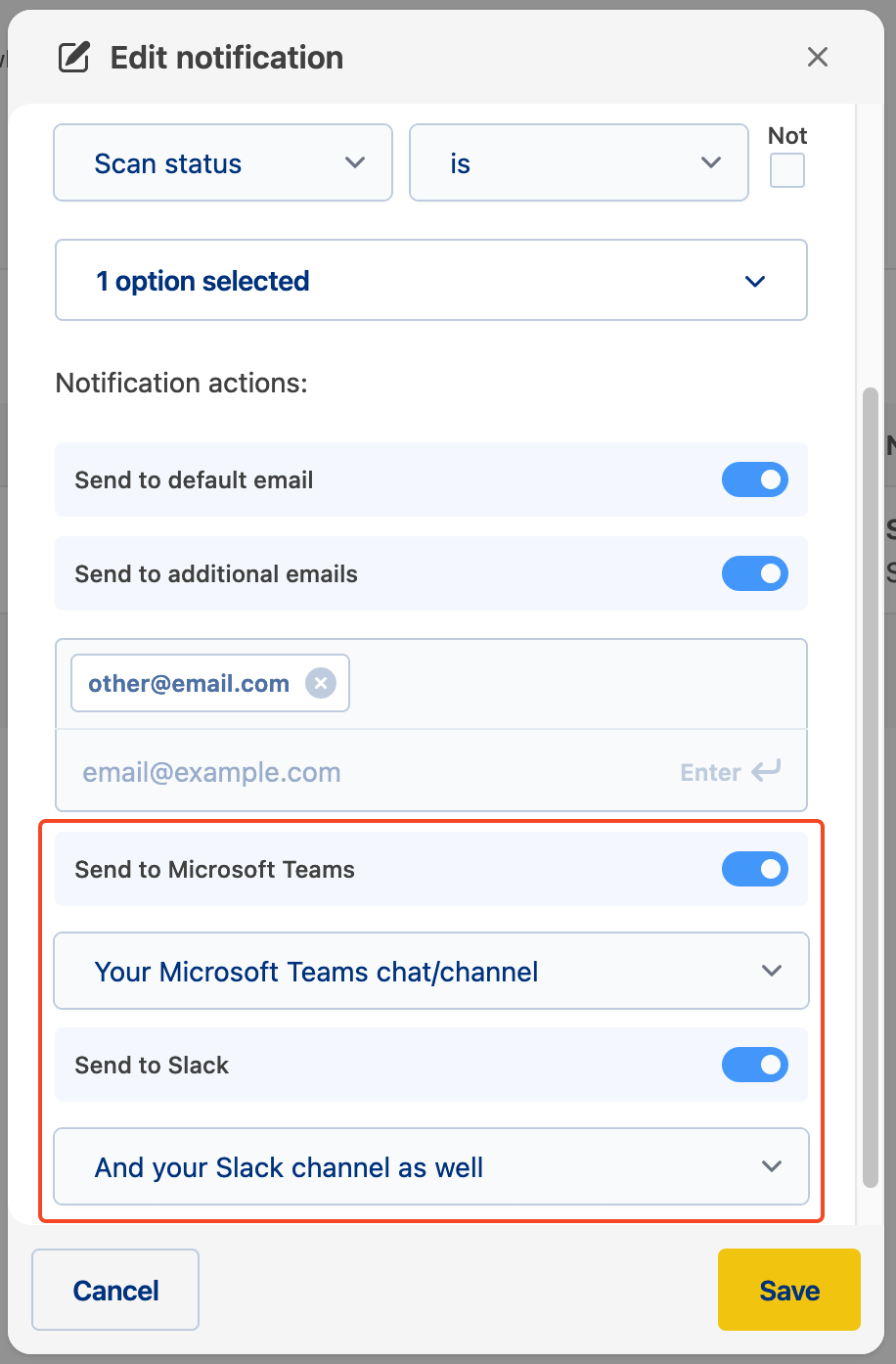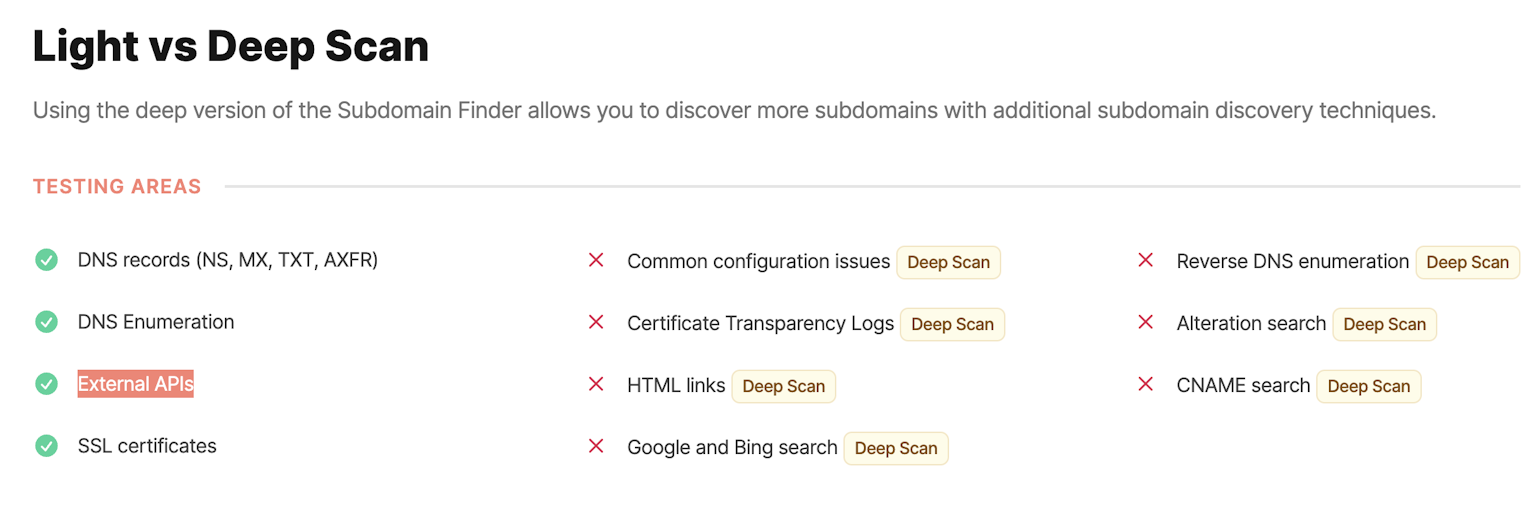Resources
Changelog
These are the latest updates we've made to our platform. If you have any questions about any of the updates you see below, please feel free to contact us!
Filter by
June 2024 Changes
DOCX reports now compatible with Google Docs!
May 2024 Changes
Finished and scheduled scans - in the same screen
Visual updates for scan results from 3 more tools
April 2024 Changes
Get far-reaching findings with the Network Scanner
Zoom in and out on details across your projects
Meet the people behind the tools
March 2024 Changes
Don’t miss a thing with new detection modules in the Network Scanner
Network Scanning
CVE
RCE
New home for Scan with Tool
Services statuses - now online
Improved evidence for Nuclei findings from the Network Scanner
Network Scanning
A fresh look for the Scan results page
Is Pentest-Tools.com any good for bug bounty hunting?
New tool: know your targets better with People Hunter
Get more from the Team feature
Two new modules in the Website Vulnerability Scanner
Web app scanning
February 2024 Changes
Know what’s new - right from your dashboard
Start a scan from the Scans section
January 2024 Changes
Exploit for CVE-2024-21887 (Remote Code Execution in Ivanti Connect Secure)
CVE
RCE
New integration: get notifications on a Teams channel
Detection for CVE-2022-1471 (Remote Code Execution in SnakeYAML library - Attlassian Confluence)
CVE
RCE
Detection for CVE-2023-46805 (Authentication Bypass in Ivanti Connect Secure)
CVE
Exploit for CVE-2023-46604 (Remote Code Execution in Apache ActiveMQ)
CVE
RCE
Exploit for CVE-2023-47246 (Remote Code Execution in SysAid)
RCE
CVE
Real-time status for all your VPN Agents
December 2023 Changes
Decluttered the spider results in Website Scanner
Pentest reporting
November 2023 Changes
Free license launched (freemium)
Automatic CVE filter mechanism for the Network Scanner
CVE
Port discovery returns only open ports
Pentest reporting
Exploit for CVE-2023-4966 (Information Disclosure in Citrix - Citrix Bleed)
CVE
Exploit for CVE-2023-20198 (Authentication Bypass in Cisco IOS XE)
RCE
October 2023 Changes
Exploit for CVE-2023-22515 (Authentication Bypass in Atlassian Confluence)
REST API is now publicly available
API security
September 2023 Changes
New My account page
Detection for CVE-2022-27510 (Authentication Bypass in Citrix ADC & Gateway)
CVE
Exploit for CVE-2023-34039 (RCE in VMware Aria Operations for Networks)
CVE
RCE
Email hard bounce alert
August 2023 Changes
Pentest-Tools.com is officially listed on the AWS Marketplace
New findings page
Automatic daily update for Nuclei templates configured in Network Scanner




























